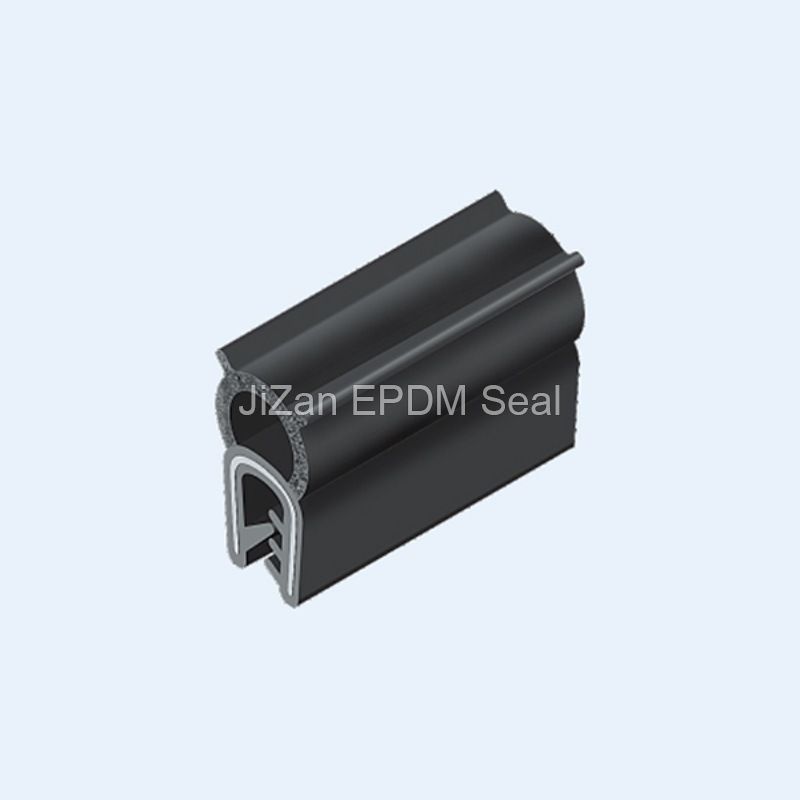EPDM Rubber Seal Strip: The Ultimate Guide
Introduction
Welcome to the ultimate guide on EPDM rubber seal strips! If you're looking for high-quality, comprehensive information about EPDM rubber seal strips, you've come to the right place. In this guide, we will explore the ins and outs of EPDM rubber seal strips, their applications, benefits, and how they can significantly enhance your sealing needs.
What is EPDM Rubber Seal Strip?
EPDM stands for Ethylene Propylene Diene Monomer, and it is a synthetic rubber material widely used in various industries for its exceptional sealing properties. EPDM rubber seal strips are specifically designed to provide a reliable and efficient seal against air, water, dust, noise, and other environmental elements.
Applications of EPDM Rubber Seal Strips
EPDM rubber seal strips find extensive use across diverse industries due to their remarkable attributes. Some of the common applications include:
1. Automotive Industry
In the automotive sector, EPDM rubber seal strips are used in door frames, windows, trunks, hoods, and various other areas to prevent water leakage, reduce noise, and ensure a smooth driving experience.
2. Construction Sector
In construction, EPDM rubber seal strips are used for weatherproofing doors, windows, and roofing systems, providing excellent insulation and preventing energy loss.
3. Manufacturing and Machinery
In manufacturing, EPDM rubber seal strips are employed to seal machinery components, protect against contaminants, and maintain operational efficiency.
4. Marine Applications
EPDM rubber seal strips are used in marine applications to create watertight seals, making them vital for boats, ships, and other watercraft.
5. Electrical and Electronics
In the electrical and electronics industry, EPDM rubber seal strips play a crucial role in sealing enclosures and protecting sensitive components from external elements.
Advantages of EPDM Rubber Seal Strips
EPDM rubber seal strips offer a plethora of advantages, making them a popular choice for sealing solutions. Here are some key benefits:
1. Exceptional Weather Resistance
EPDM rubber seal strips exhibit exceptional resistance to weathering, UV rays, ozone, and extreme temperatures, ensuring long-lasting performance even in harsh conditions.
2. Flexibility and Elasticity
Due to their high flexibility and elasticity, EPDM rubber seal strips can conform to irregular surfaces, creating a tight and secure seal.
3. Chemical and Moisture Resistance
EPDM rubber is resistant to various chemicals, acids, and moisture, making it suitable for diverse industrial applications.
4. Durability
EPDM rubber seal strips have a long lifespan, reducing the need for frequent replacements and providing cost-effectiveness in the long run.
5. Easy Installation
The ease of installation is another advantage of EPDM rubber seal strips, saving time and effort during the sealing process.
Choosing the Right EPDM Rubber Seal Strip
Selecting the appropriate EPDM rubber seal strip is crucial to ensure optimal performance and efficiency. Consider the following factors when making your choice:
1. Material Quality
Ensure that the EPDM rubber seal strip you choose is of premium quality to guarantee durability and longevity.
2. Size and Shape
Measure the dimensions of the area that requires sealing accurately to select the right size and shape of the seal strip.
3. Temperature Range
Check the temperature range of the EPDM rubber seal strip to ensure it can withstand the specific conditions of your application.
4. Adhesive Backing
Some EPDM rubber seal strips come with adhesive backing, simplifying the installation process and enhancing the overall sealing performance.
Installation Guide for EPDM Rubber Seal Strips
Follow these steps for a successful installation of your EPDM rubber seal strip:
Step 1: Clean the Surface
Thoroughly clean the surface where you intend to install the seal strip, removing any dirt, dust, or residues.
Step 2: Measure and Cut
Measure the required length of the EPDM rubber seal strip accurately, and cut it to the appropriate size using sharp scissors or a knife.
Step 3: Test Fit
Before removing any adhesive backing, test fit the seal strip to ensure it aligns correctly with the area to be sealed.
Step 4: Apply Adhesive (If Applicable)
If your EPDM rubber seal strip has adhesive backing, peel off the protective layer and carefully apply the strip to the surface, pressing firmly to ensure a secure bond.
Step 5: Double Check and Trim (If Needed)
Double check the alignment and fit of the seal strip. If necessary, trim any excess material for a clean finish.
Maintenance and Care
To maximize the longevity and performance of your EPDM rubber seal strip, follow these maintenance tips:
Regularly inspect the seal strip for signs of wear or damage.
Clean the seal strip with mild soap and water to remove any accumulated dirt or debris.
Avoid using harsh chemicals or abrasive cleaners that could degrade the rubber material.
Conclusion
EPDM rubber seal strips are versatile and reliable sealing solutions that find applications across various industries. Their exceptional weather resistance, flexibility, and durability make them a top choice for countless sealing needs. Properly selecting and installing EPDM rubber seal strips will ensure optimal performance and efficiency for years to come.
So, if you're seeking top-notch sealing solutions, consider EPDM rubber seal strips for all your industrial, automotive, marine, and construction requirements.
298
0
0
All Comments (0)
If you are interested in sending in a Guest Blogger Submission,welcome to write for us!





Comments